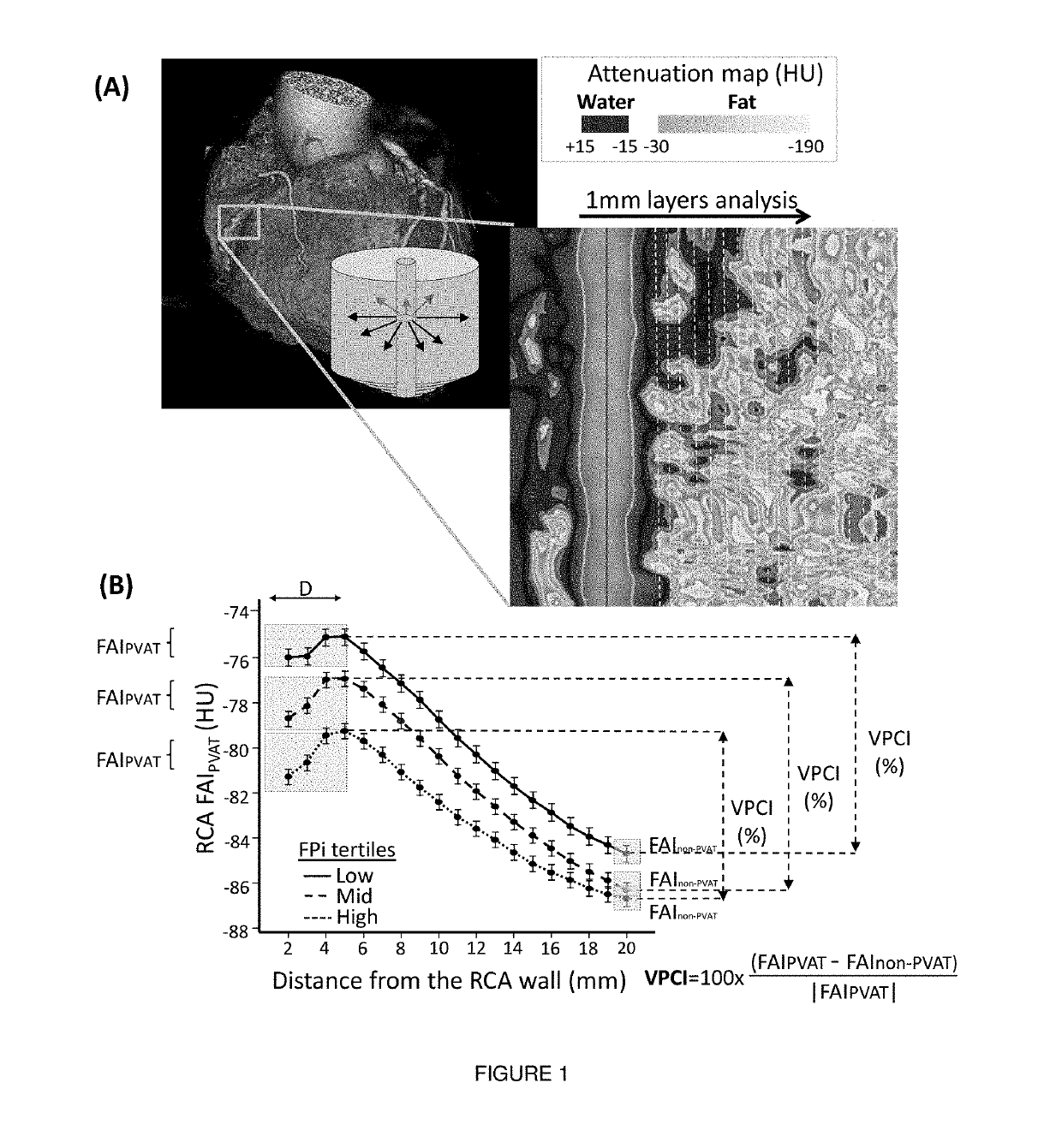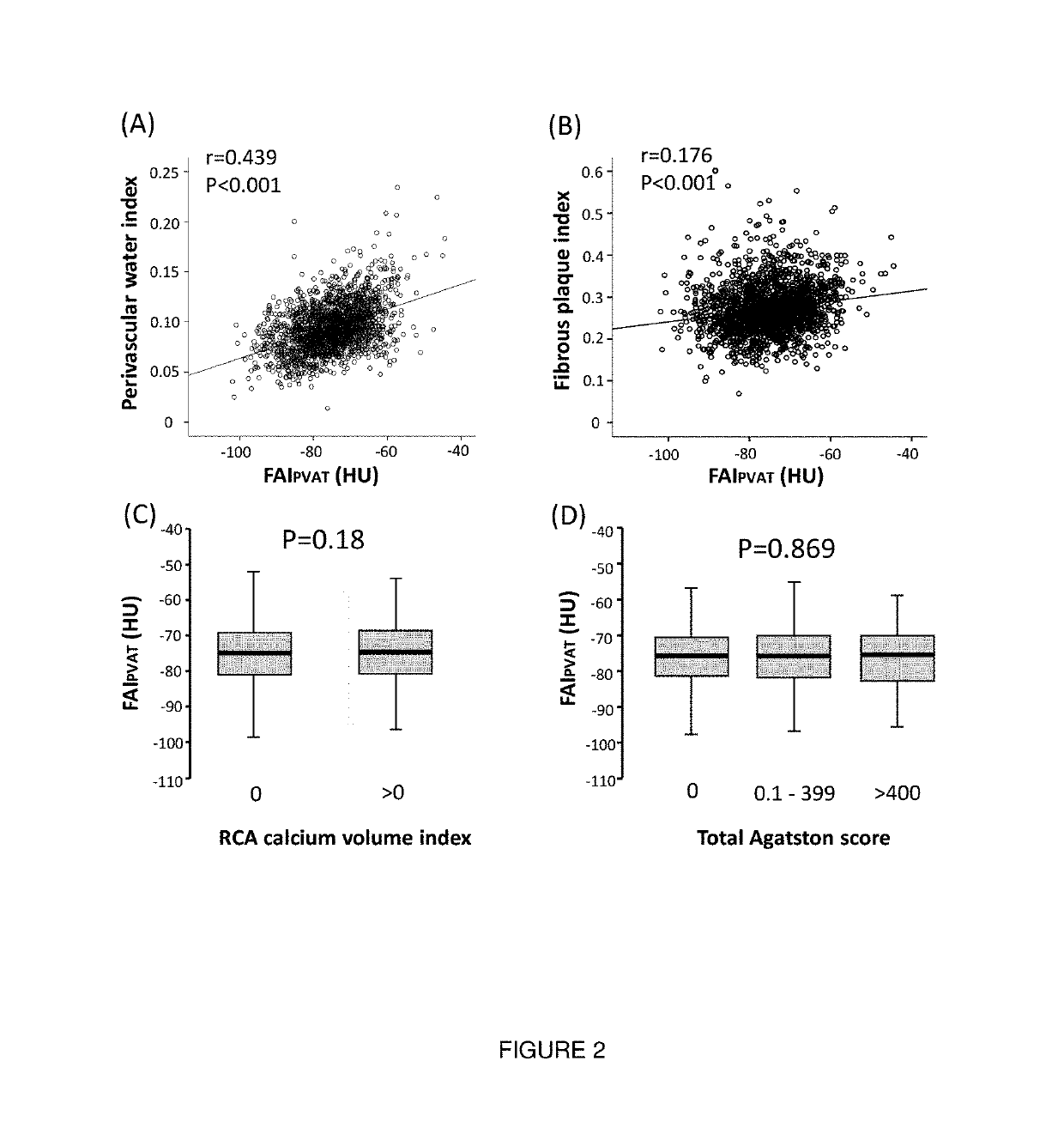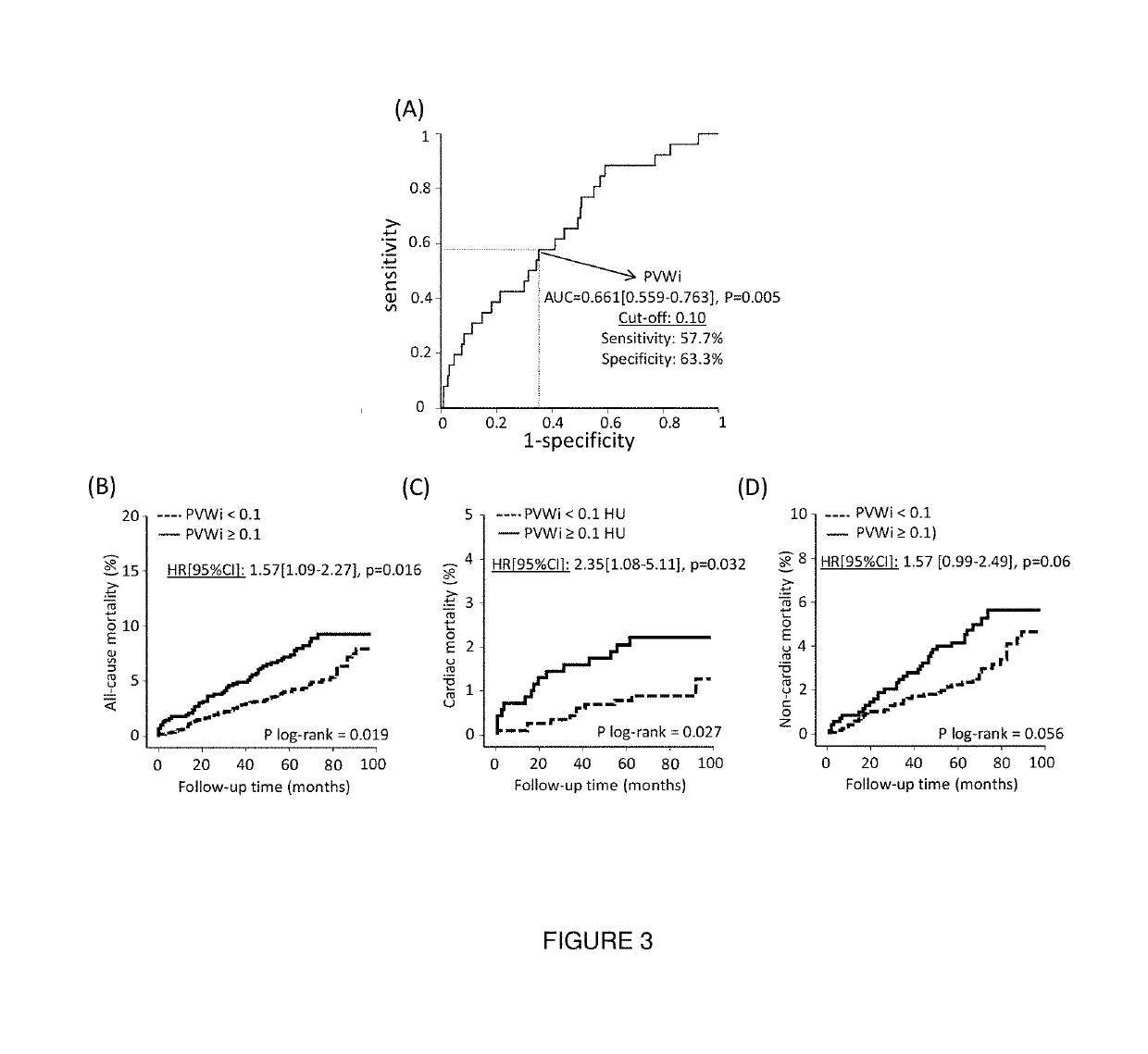Method
a biomarker and cardiovascular disease technology, applied in the field of new cardiovascular risk biomarkers, can solve the problems of insufficient blood supply to downstream tissue, weak extracellular matrix separating the lesion from the arterial lumen, and often asymptomatic plaques, so as to increase the risk of death, increase the risk of cardiac mortality, and increase the risk of mortality.
- Summary
- Abstract
- Description
- Claims
- Application Information
AI Technical Summary
Benefits of technology
Problems solved by technology
Method used
Image
Examples
example
Methods
Patients
[0111]In this prospective study, a cohort of 1993 subjects was recruited prospectively between 2005 and 2009, following a clinically indicated CTA performed at the Erlangen University Hospital (Erlangen, Germany). A total of 1872 subjects had analysable CTA scans and were included in the study. The vast majority of the scans were performed for exclusion of coronary artery disease (CAD) (91.7%). Most of the patients had presented with atypical symptoms (85.3%) and less than half had a history of chest pain (43.4%). A minority of the scans (3.8%) was performed in patients with previously known CAD to evaluate possible disease progression (3.7%) or the patency status of a vascular graft (0.1%). Following the baseline CT scan, only a small proportion of the cohort was diagnosed with obstructive CAD (21.6%). The patient demographics and clinical characteristics of the studied population are summarized in Table 1.
TABLE 1Cohort demographics and clinical characteristicsof the...
PUM
 Login to View More
Login to View More Abstract
Description
Claims
Application Information
 Login to View More
Login to View More - R&D
- Intellectual Property
- Life Sciences
- Materials
- Tech Scout
- Unparalleled Data Quality
- Higher Quality Content
- 60% Fewer Hallucinations
Browse by: Latest US Patents, China's latest patents, Technical Efficacy Thesaurus, Application Domain, Technology Topic, Popular Technical Reports.
© 2025 PatSnap. All rights reserved.Legal|Privacy policy|Modern Slavery Act Transparency Statement|Sitemap|About US| Contact US: help@patsnap.com



